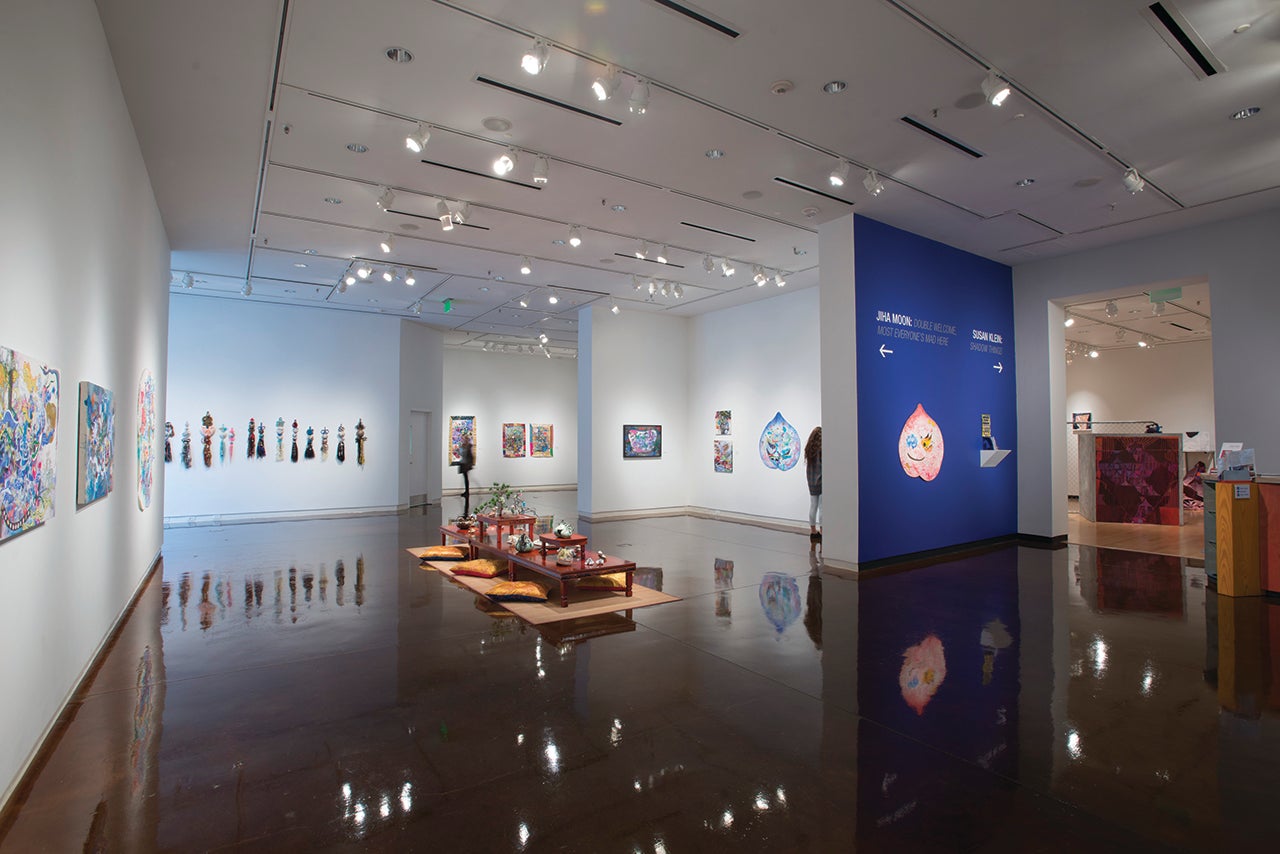There’s more to good art than meets the eye. What we hear about the work, and what we feel compelled to say ourselves, is an equally vital part of the visual art experience. What’s more, it is this dialogue that can strengthen and even transform the community around us.
Here’s a vivid example: In 2014, the College’s Halsey Institute of Contemporary Art invited street artist Shepard Fairey to animate Charleston’s cityscape. He boldly did so with outsized, red-and-gold murals emblazoned with words like “power” and “glory.” Today, passersby are still spotted taking them in and discussing their meaning. Art can break down the walls we build around ourselves on a city street, as we muse, point, shrug and nod with strangers passing by.
That the Fairey show continues to ignite conversations is no happy accident. After all, the exchange that is sparked by contemporary art is part of the Halsey’s guiding mission. “The Halsey focuses on creating meaningful interactions between adventurous artists and diverse communities,” says Mark Sloan, the Halsey’s director and chief curator. “It’s a key component of our curatorial and programmatic approach.”
Art as social connectors also resonates with Deborah Chalsty, a lifelong collector who was so moved by the Halsey’s mission that she stepped forward to pledge $1 million in support. Given in honor of her mother, Jennifer A. Chalsty, the endowment will strengthen the Halsey’s role as a vital cultural resource for the College’s students as well as help to further the institute as a cultural hub in the city and beyond. It will also support the documentation of exhibitions, the Looking to See program for K-12 students, and the artist-in-residence program. This fall, the College will honor Chalsty’s generosity with the dedication of the newly named Deborah A. Chalsty Gallery.
Chalsty sees her support of the Halsey as an extension of what she has been doing her entire adult life: supporting contemporary art. Contributing to the Halsey allows her to do so on a much wider scale. “I have been collecting my friends’ art since I can remember,” notes Chalsty. “It’s almost like having a conversation with them every day.”
She’s particularly inspired by artists previously underrepresented in the art world.
“I think of art as a language that simply has a different vocabulary, grammar and syntax than that which we are used to, and that’s, in part, what makes it so interesting,” says Chalsty. “There’s an ambiguity in that language that allows us to insert our own unconscious and fantasies. To my mind, that’s what makes art so dynamic long after their creation.”
We have all heard the virtues of the art of conversation. Now, thanks to the considerate philanthropy of Deborah Chalsty to the Halsey Institute of Contemporary Art, we can all gain a deeper appreciation of the conversation of art.





